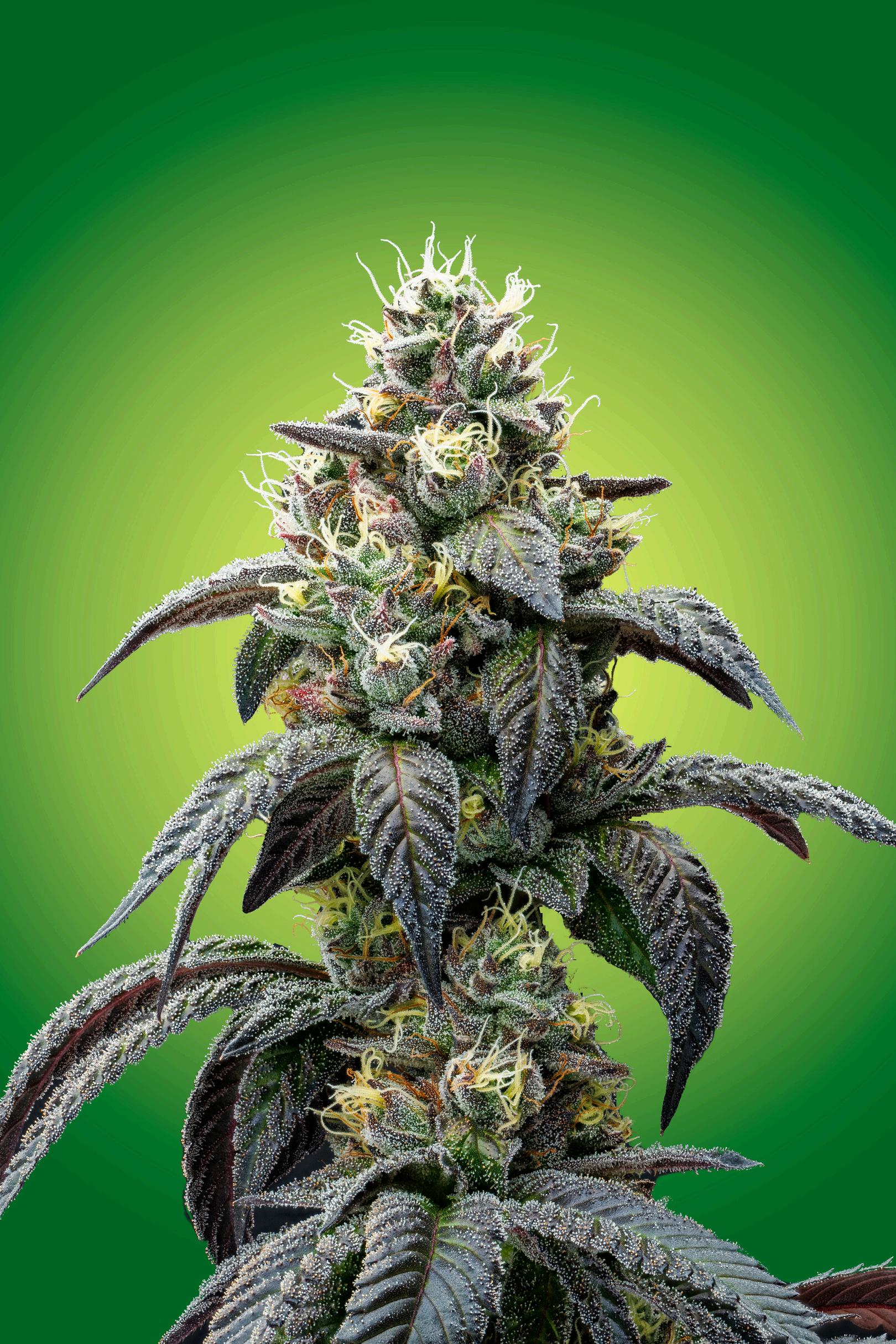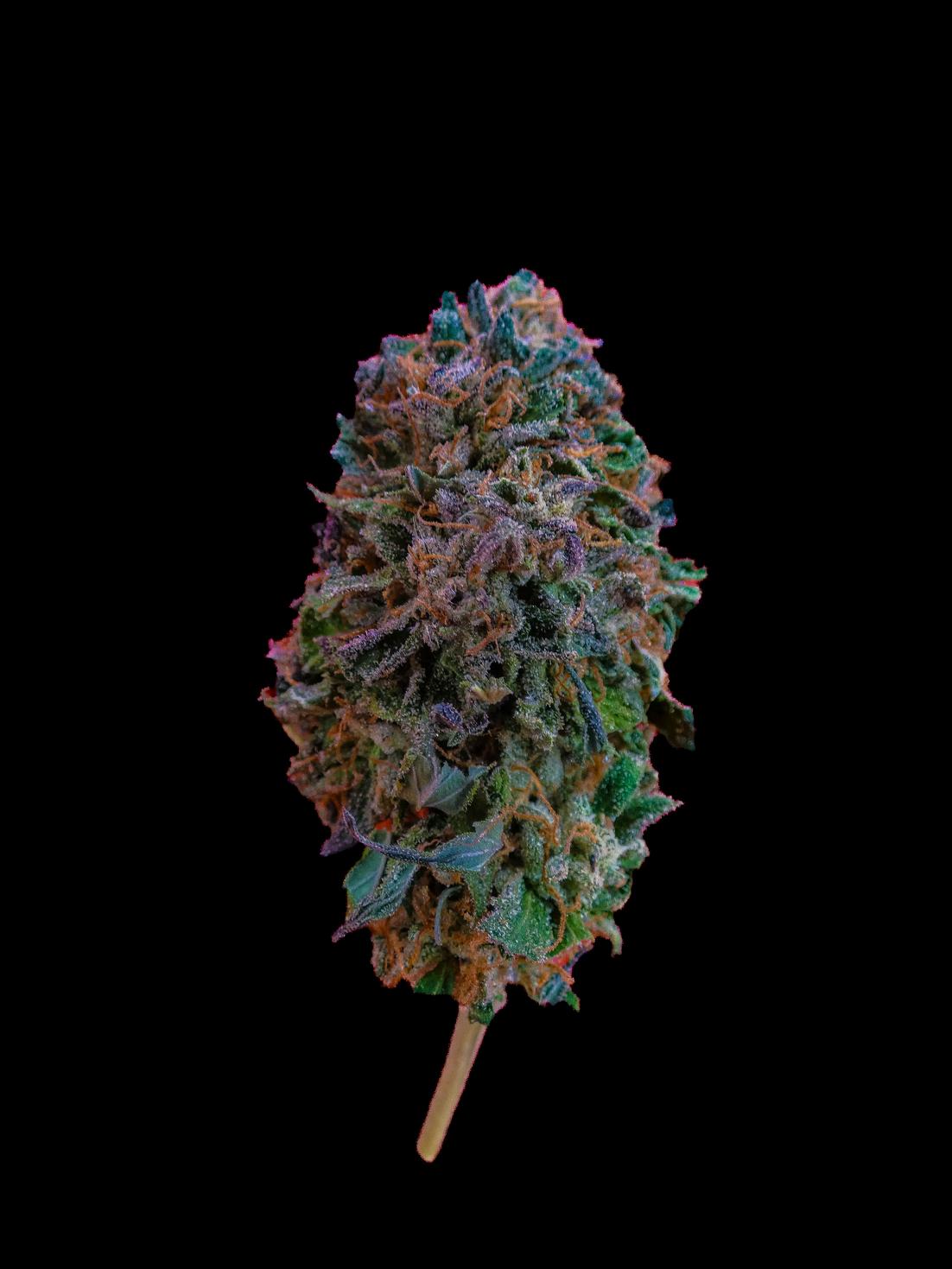CULTURE TRADITION PASSION
CONNOISSEUR SHELLEY PEEBLES
CANNAHUMANS NICHOLAS BOWERS
CANNABIS FOUNDERS CLUB
DHARSHINI CASINATHEN





CONNOISSEUR SHELLEY PEEBLES
CANNAHUMANS NICHOLAS BOWERS
CANNABIS FOUNDERS CLUB
DHARSHINI CASINATHEN





Every April 22nd, we should be pausing to celebrate this spinning blue rock we call home. Earth Day is more than just some weak hashtag, it’s a rallying cry for the planet. And in the cannabis community, that message hits different, or at least it should, because our roots are in the soil, our medicine is from the earth, and our mission is to protect what gives us life
Cannabis isn’t just a plant, we all know this; it’s a healer, a disruptor, and a symbol of resistance But it’s also a reminder that the natural world has always offered answers, if we’re smart enough to listen We see cannabis as the ultimate Earth Day ambassador It’s regenerative, resilient, and radically sustainable when we do it right
This year, let’s challenge our community: let’s go beyond rolling up and actually do something for the planet Support sun-grown, pesticide-free cultivators Elevate brands that package consciously, that source ethically, and that put environmental justice at the core of their mission. Because let’s be honest, the cannabis industry isn’t immune to waste, overconsumption, and greenwashing.
So blaze one for the earth today, but then do something. Pick up trash at your favorite smoke spot. Plant hemp seeds in your backyard, if you can. Write your lawmakers about cannabis policy and climate action Talk to your plug or dispensary about sustainability Every move matters
Cannabis opened our minds Now it’s time to open our hearts and our hands to protect this planet that makes it all possible Earth Day isn’t a moment It’s a movement And the cannabis community is built for this
Stay lifted Stay rooted
pg. 4: Cannabis Founders Club: Dharshini Casinathen
pg. 8: Power to the People: The Rise of Consumer-Based Research in Cannabis
By Jessica Reilly-Chevalier
pg. 14: CannaHumans: Nicholas Bowers

pg. 22: The Connoisseur: Shelley Peebles


pg. 30: Planted with Sara Payan: Interview with Luke Scarmazzo

pg. 38: The Green Lie
pg. 39: Glazed

pg. 36: Marijuana in the Era of Trade Walls
By Bethany Niebauer














By Jessica Reilly-Chevalier
Cannabis and research do not have a long, happy history together For decades, cannabis research was suppressed by the government as a tool of prohibition Positive research findings threatened the propaganda of the devil’s lettuce and the monopoly of single-molecule medicine
Today, when cannabis is legal for nearly half of Americans recreationally and even more medicinally, cannabis research is exploding But traditional research mediums are costly, time-intensive, and still biased So what are cannabis companies and consumers to do?
Take the matter into their own hands with consumerbased cannabis research.
What is Consumer-Based Research?
There is no formal definition of consumer-based research
Traditional scientific research is conducted using the scientific method, a model of knowledge acquisition that has been used for centuries.
It begins with an observation and a question: why does X cause Y, can X do this and that to Y, and so on From there, a scientist develops a hypothesis, a predicted outcome or answer To test this hypothesis, an experiment is designed. This experiment must be carefully controlled and test as few variables as possible: one variable at a time is the gold standard Data is gathered from these tests and then analyzed to find a conclusion It is a solid model that has worked well for centuries
But cannabis throws a wrench in these works as it does for so many things Cannabis is not a single molecule: it is an entire plant made up of hundreds of different compounds that all work together synergistically to cause an effect
Consumer-based research, often called real-world data gathering, takes the scientific process out of the lab and into the world. There is no extreme vetting of participants to ensure they meet rigorous control models There is no isolated lab setting where the trials and struggles of the outside world fall away There is no focus on a single molecule
Instead, consumer-based research seeks to put consumers in a real setting and see what happens. Data is still gathered in a robust and comprehensive manner before being analyzed The result is faster, more cost-effective, and often, more indicative of real-world results than traditional research models
One of the biggest challenges with taking research outside the lab is ensuring participants can provide robust and standardized data on their experiences That’s where MoreBetter comes in The company began as a cannabis journaling app to help medical patients gain a better understanding of how certain products affected their symptoms.
MoreBetter was born to help alternative medicine companies gather real-world consumer results to better tailor their marketing efforts If 1,000 people weighed in on the effects of a supplement or cannabis product, the company would know which claims were actually backed by experience, and which fell short.
To date, MoreBetter has run over dozens of real-world data collections with 15 published studies
“Traditional research models can be archaic in their timelines and cost-prohibitive for small brands who don’t have tens of millions of dollars to spend on research,” said Tyler Dautrich, COO of MoreBetter “The pace of innovation in cannabis is crazy It can take anywhere from nine to 24 months for a single study to publish, so it’s easy to feel like research will never catch up with the industry” MoreBetter aims to help businesses systematically collect structured data from consumers in a way that meets the standard of the observational scientific method, where researchers observe and record behaviors without manipulating them If you want to contribute to a study, join MoreBetter’s email list to get notified when new data collections launch
MoreBetter began seeing more interest in consumer-based research back in 2020, when clinical research was halted. “Real-world data collection can continue to push research forward It can become a first step, rather than waiting for traditional research to catch up ”
Many organizations are taking the task of advancing cannabis data into their own hands Riley Kirk is the CEO and co-founder of the Network of Applied Pharmacognosy (NAP), an organization formed by two stoner scientists to “accelerate research and public education for cannabis, psychedelics, and other natural medicines by prioritizing lived experience.” Her background in academic research left her disenfranchised by how traditional research models treated both cannabis and cannabis consumers
“Traditional models of research in biochemistry are looking at a single molecule on a single receptor to make assumptions. Cannabis is complex with hundreds of molecules Bodies are complex with hundreds of receptors and endocannabinoids We don’t have the research tool to evaluate that level of complexity” Kirk said

In late 2023, NAP launched its first study, a longitudinal study open to anyone over the age of 18 in the US who consumed cannabis in partnership with MoreBetter. 91% of over 1,000 participants were daily cannabis consumers. “Most other medications that people are on, they’re meant to be taken daily But when you consume cannabis daily, you’re seen as “dependent ” Kirk said “This research showed that daily consumers still have a high quality of life What’s more, when we shared these findings with our audience, there was a huge sense of reassurance – it’s a community of people who medicate ”
Cannabis and its multitude of molecules can present a highly personalized medicine for people, particularly once their unique endocannabinoid system is understood Kirk believes that consumer-based research is the future of cannabis medicine because of this.
“We have to capture that diversity of effects, be it negative or positive, from cannabis consumers You cannot replicate real-world results through AI, or in vitro, or with an algorithm ” Kirk said “Traditional research models move so slowly that by the time a study publishes, those [cannabis] products may not even be available anymore –or the legal infrastructure may have changed Being able to quickly collect data is a snapshot of what’s happening
Suppositories are challenging to study because they’re considered a medical device [not medication ] But we know anecdotally suppositories have been used for thousands of years. We’re just lacking objective scientific data ” said Mbengue Her data collection started with 103 people and ended with 79 participants The results were astounding – 94% agreed that they helped with period cramps Adverse reactions were less than 5%
(Editor’s note: The author of this article participated in this collection She was not compensated financially for her time during the study or to include any companies in this article )
Improving Cannabis Products Through Consumer Research
Consumer-based research can also help identify gaps in products that are lowering consumer experience. Active, a cannabis vape brand, launched their consumer-based research study “Getting High for Science” to create a better vape for cannabis concentrates
When Randy Reed, Vice President of Science, joined the company, he noticed an odd discrepancy: the puff machines used to test the vapes in the labs were based off protocols developed for nicotine vapes. But cannabis concentrates have a completely different viscosity than ecig liquid When he dug in further, he found that almost all of the research on vapes was based on nicotine and ecig liquids

Closing the Gap for Women’s Pain Through Real-World Data Collections
Megan Mbengue, founder of Trusted Canna Nurse, agrees “A lot of the gold standard of research doesn’t reflect real-world use We have to be able to reflect realworld use with real people.”
Mbengue also partnered with MoreBetter to conduct data collection on her cannabis suppositories There is a massive gap in both research and product offerings for women dealing with pain, particularly cycle-related pain Cannabis presents a unique opportunity to close this gap, which is what motivated Mbengue to create this product and self-fund this data collection.
“The flow rate and draw durations of e-cigarettes is quite different from cannabis concentrates Nicotine devices are based on Newtonian fluids, but cannabis concentrates are non-Newtonian fluids – a huge difference for heating devices ” Reed said “Even within cannabis, the ideal emperature and draw rate changes based on the specific ype of concentrate. There’s going to be a huge variation on how [your vape] hits based on the type of extract, but all vape devices are expected to work with anything ”
So Active got to work, designing an experiment for human puff topography for cannabis vapes They ended up with 350 participants for the “human puff profile”, a scientific measurement of how people hit cannabis vapes. If that sounds a little in the weeds to you, it is But details like draw duration, flow rate, viscosity, and resaturation time have a massive difference in how well a vape pen hits
Turns out, cannabis consumers hit their vapes with a higher force for longer durations, but not as frequently as e-cig vapes. These pauses are important: as a nonNewtonian fluid, resaturation time is crucial for the coils in cannabis vapes – but not a consideration for e-cigs Cannabis vapes also need longer to heat up: e-cig technology in a cannabis vape means it heats up too quickly, which can lead to coil burnout and even the release of toxic byproducts.”
Active’s findings, expected to publish in Q3 of 2025, have helped Reed and his team create better internal technology for disposable and reusable cannabis vapes. “[Cannabis] is an emerging industry with big knowledge gaps, especially compared to Nicotine, which has tons of consumer-based research In terms of the scientific community, it’s still quite early on for cannabis ” Reed said
Of course, traditional research models don’t like to share space, so there are steps brands must take to ensure their findings are seen as scientifically valid
“There is no set standard for how many people are required to set a clinical standard in research,” Dautrich said “There are clinical studies with less than 30 people But if there’s less than that in a real-world data collection, it can be easier for pharmaceutical companies to poke holes in the findings. There’s power in larger sample sizes.”
Mbengue encountered this as well “Someone said it [our study] wasn’t controlled because people could use other methods of pain management [in addition] but in the real world, people use multiple tools ”
While real-world data collections often aren’t taken seriously by the mainstream medical community, Mbengue hopes to change that She’s working on writing up the results of this study to publish in a cannabisfocused scientific journal “This research can drive future clinical trials by proving significant improvements in outcomes that can be done in randomized, controlled trials ”
Dautrich and the MoreBetter team are also pushing for more publications off real-word data collection; his team has published 15 studies to date
Reed agrees. “This data is huge for consumer safety because people use these devices for medical purposes ” If they’re not designed with cannabis in mind, vapes work less effectively and may even have unintended dangerous results
One of the reasons consumer-based research may be gaining popularity is because it’s done by cannabis consumers, for cannabis consumers – not traditional government institutions
“Trust is what traditional academia is missing,” Kirk said “Most traditional research is funded by the government, who prohibits cannabis, arrests people for this plant, and ruins lives over it People don’t want to take part in government research with researchers who haven’t consumed cannabis and don’t understand it No one in the cannabis community trusts the government, especially personal consumption information like where they’re getting their products.” Ain’t that the truth?
Consumer-based research has several advantages over traditional models: it moves quicker, costs less, and considers real-world impact, not the isolation of a lab While traditional research models are still vitally important for continuing to prove cannabis’ overall safety and medical value, the cannabis industry is in desperate need of more research, now – especially as alternative cannabinoids like HHC and Delta-8 THC grow in prevalence In the absence of understanding, all cannabinoids are grouped together – and that is an infamy the industry cannot afford
The future of cannabis research is the same as the future of cannabis: community























































Sara Payan: Hello, everyone, and welcome to Planted with Sara Payan. I’m Sara Payan, your host, and today, our guest is Luke Scarmazzo. He has been a political prisoner, and he has gotten out He has written a book, “High Price ” Welcome Thanks for being here
Luke Scarmazzo: Thanks for having me Sara It’s an honor Big fan
215 Medical Movement in California
Sara Payan: I’m excited to have this conversation with you You were very much in the early days of the 215 medical movement and had a dispensary in Modesto
Luke Scarmazzo: We talk about it a lot and even joke about it being the golden era in the 215 times. It was a different time back then in the sense that every day you went to work, it was always in the back of your mind that you could go to jail and might not come home to your family that day And that was a real thing It was a real presence in your life We still have 3000 men and women in federal prison alone for cannabis Parker Coleman, Edwin Rubis and Valerie Flores are still in prison for cannabis. So, you know, even though we’ve made so much progress, there’s still a long way for us to go before the effects of prohibition aren’t felt by generations
Sara Payan: I agree I have a real problem with the fact that we’re able to do business now, and there are large companies that are, you know, multi-state operators while we still have people in jail.
Luke Scarmazzo: It’s not right at all And it seems like it’s the easiest, lowest-hanging fruit, right? It’s both sides of greed There shouldn’t be people incarcerated for nonviolent cannabis offenses Every presidential candidate besides Joe Biden was in favor of legalization and releasing people from prison.
President Biden even made the promise that he was going to release everyone who was incarcerated for cannabis and zero out or expunge their records The progress is tremendous in the federal realm, but we still have so much to go when opening state after state and market after market. People need to be released from prison. All the other things can be figured out. We can argue about regulation We can argue about safe banking But we can’t do that while people sit in prison and wait, and mothers and fathers have empty seats at Christmas dinners and empty seats at Thanksgiving tables because somebody is in there for cannabis It is crazy to me that we still have to talk about this
Turning to Authorship: High Price by
Luke Scarmazzo
Sara Payan: We’ve got a lot to do I want to talk about your book “High Price.” What made you decide to write a book?
Luke Scarmazzo: I knew the story was important from the initial conviction when I went into prison I was telling myself the whole time I had to tell this story because I felt in a sense that the government was trying to kind of push us off to the side and kind of keep us quiet and put a blanket over our situation and whether that was true or not like I felt like that I know people think, “Oh, you’re in prison You have all the time in the world to do things ” It’s not really like that They’re scheduled out You’re in the yard at a certain time There are all kinds of things that they have to structure to try to help people rehabilitate
I wrote the first 10 pages, and it just sat for years, and then I got put in the SHU, and the SHU is solitary confinement It stands for segregated housing unit I was in the SHU for several months at this time You’re just in a cell by yourself There’s no TV, there’s nothing in there You’re fed in there with the tray, which comes in a metal slot, you eat, you send your tray back out when you’re done, and you have books and can write letters. A lot of times, the prison won’t provide books, so you’ll have to have books sent in from your family members or friends on the street And so you try to time yourself to always have reading material because if you run out of reading material or things to do in a brick room with nothing else, the day is dragged
Sara Payan: Yeah
Luke Scarmazzo: It’s such a horrible form of treatment to do to a human So I’m in this situation; I run out of reading material I’m waiting on my next books, and I go, well, hell, I guess I’ll just continue writing this story. So it was really like a necessity thing. The funny thing is that I came up with this in my head I’m going to write four pages a day because the task seemed too daunting Oh, I got to write this whole book It’s going to be 400 and 500 pages I used to get nervous Like when my teachers would give me a 20-page essay, I’d wait till the last night and do it on the last night You know what I mean? So I’m daunted by this task. And then, finally, I came up with this thing where I’m going to take little bites at it with four pages a day I’m coming up with four pages a day because that’s what they gave us per week: four pieces of writing paper and two envelopes So, on the first day I wrote, I used my four pages I had another set of four pages there. On the second day, I used the second four pages, but then I realized I didn’t have the material to keep this going
They have what’s called an orderly, and he passes stuff out like dinner, laundry, and other things like writing supplies You don’t have a currency back there–there’s no money. I guess you can call, and maybe if your people on the street are connected, you could have money transferred As far as being able to barter for stuff in there, you have food Food is very valuable there because it’s scarce So I told the orderly, I will give you a lunch tray and a dinner tray every week if you can give me extra writing paper And he’s like, okay, cool deal. The first night he comes by, I’m expecting maybe to get ten pages or something, you know? And he goes to, like, drop the laundry by my door, and he slides in a full notebook under there and eight pens And then, for every week, he just kept doing that for me And it was so awesome that I could sit down and write
Sara Payan: So, how long did it take you?
Luke Scarmazzo: When I got the paper, I sat down, and the first 10 days, I was nonstop, and I wrote like 40 or 50 pages I felt like I had something there when I had those first 50 pages; now I’m inspired So, I would say the total time was probably over the course of a couple of months. I ended up staying in the SHU for seven months my first time. I finished the book the second time I went to the SHU, which was an eight-month run
Sara Payan: That’s a long time to be alone
Luke Scarmazzo: Yeah, it is. And I wasn’t even one of the guys there the longest Some people were there longer than me It’s a terrible existence And no doubt that they will call it torture 50 years from now But, in that environment, I was able to sit, and it was like writing in a Zen cave There was no noise There was no one talking to me So, I was able to vividly recall everything that happened and even conversations. I tried to get as close to the conversation as I could remember It was a unique experience and emotionally overwhelming because I had to sit and live through the whole situation again It was therapeutic, for sure, but definitely an emotionally overwhelming experience And then again, when I had it printed and had to sit and read it to do the first edit, it was tremendously emotional.
Sara Payan: When I was reading it, I didn’t know what to expect In many ways, it was a day in the life with you I wondered how you could recall all those things and go so deep But I mean, spending all that time in the SHU
Luke Scarmazzo: To be honest, if I didn’t do that, it wouldn’t have come out Yeah I wouldn’t have ever written the book if I didn’t go into solitary confinement So that was divine intervention
Sara Payan: How long after you finished the book did you get out?
Luke Scarmazzo: I finished the first copy in 2018–so about five years When I got out, my editor, Angela Bacca, really pushed me I gave her the manuscript and asked her to help me because I did not want anybody else to help me. She had been along the journey the whole way.
Sara Payan: I wanted to ask you if you wrote more about the prison once you were out because it hits close to home when you’re in the midst of it, and you’re writing about it, I’d imagine
Luke Scarmazzo: Oh, yeah, I couldn’t do it I just couldn’t do it and didn’t want to But I was able to afterward
Sara Payan: I can’t imagine having to tell your own story about being in prison It’s got to mess with you in many ways because you’re just trying to get past it.
Luke Scarmazzo: Right And just one of the really powerful moments with that is, so we just did the California State Fair, our brand was sold at the State Fair with the state’s backing It was a really powerful moment for me because 60 miles down the road from the California Exposition, we were raided for running a dispensary. So now I’m sitting at the State Fair in a dispensary with the state’s backing and DCC around me and all the sheriffs and all these, you know, officials I’m working there with Ricardo, my co-defendant, and my daughter, Jasmine It was so powerful It was so moving and full-circle that it made me feel everything was worth it
Sara Payan: We’ve talked about a lot of the stuff you’ve done in the past, but let’s talk about what’s going on now for you and what you’re excited about What are some of the projects?
Luke Scarmazzo: Well, I mean, the one that’s taken the most time is Prophet That’s the cannabis brand I launched with my co-defendant, Ricardo Montes. It’s a brand that’s rooted in social justice Ten percent of our brand goes back to the people still in, men and women still incarcerated And that is something that I hope we can end
Sara Payan: Luke, thank you for sharing your story If it weren’t for people like you, we wouldn’t be doing what we’re doing today. For those who want to follow you on social media, check out the book or your products, how do they do that?
Luke Scarmazzo: Go to Prophet Brands on social media, Prophetbrands com The book is available on Amazon It’s “High Price- The Luke Scarmazzo Story.”
Write your senators, and congresspeople, and stay involved at the local, city, and national levels Because these people craft the policies that affect us in our industry, don’t sit on the sidelines and talk when you aren’t involved in the policymaking or putting forth effort
Sara Payan: Absolutely What is it that they say? If you don’t get a seat at the table, you might be on the menu
Luke Scarmazzo: Yeah That’s real talk
Sara Payan: Thanks so much, Luke.
Luke Scarmazzo: Yeah Thank you, Sara





YOU DESERVE THIS


By Bethany Niebauer
Donald Trump, known for being unpredictable has injected new levels of uncertainty into the American economy Even people who don’t pay much attention to the news have probably seen the sudden drops and surges in the markets With so much chaos, it’s fair to ask what the cannabis industry might face as the potential for an economic recession looms
Disposable vape pens are the product most likely to see a steep increase in price, since almost every part of the pen except the concentrate comes from China Reusable vape pens will also increase in price, but they may become more appealing to costconscious consumers since they only have to buy them once rather than multiple times Some suppliers may be able to switch

protected from this and could even experience a bump
Understanding Marijuana and Tariffs
Federal prohibition on marijuana forces every state to have its own production centers Because the plant cannot cross state borders without triggering federal intervention, each state has had to create its own supply lines These independent supply chains mean that there’s little involvement with international markets. Unlike automobile manufacturing, which has multiple supply lines originating at various locations all over the world, each state is largely self-sufficient
Except for the plastics China is the single largest producer of the world’s plastics, producing about 32% of worldwide plastic, but North America is the second largest producer China is also a huge manufacturer of vape pens, including both the cartridge and the lithium-ion battery According to Hoodie Analytics, the industry’s most comprehensive data source, the sale of cannabis vape pens generates close to $800 million across the US every month
Assuming that Donald Trump holds steady with his plans to levy tariffs in July, there could be a silver lining for the cannabis industry If Americans are unwilling to pay for imported alcohol, from Germany, France, or South America then they may use their purchasing power at the dispensary We’ve seen what the imposition of tariffs does to the stock market, and there is no reason to think that July will be different from April Stocks will fall sharply around the globe and fears of a recession will strengthen When times are hard, more Americans lean into cannabis consumption An economic collapse would push more Americans to their dispensaries During the Covid-19 pandemic, many dispensaries saw a temporary boom, especially while lockdowns were in effect. If the bottom falls out of the economy, lots of Americans will be looking for a way to take the edge off

They dressed it in freedom, this leaf of the land, But sold it in silence with a corporate hand. The suits lit cigars while the people did time, Now they cash in on ounces that once were a crime. Cannabis, sacred once whispered in code, Now dances in logos down Wall Street’s gold road. They raided our gardens, called healing a sin, Then built glossy brands with the blood of our kin. Politicians smile with lobbyist pay, Slicked back in the backrooms where justice decays. They passed the reform, not for you or for me, But to carve out the pie for their friends on TV.
A war on the poor, disguised in a plant, Now flipped for investors who schmooze and enchant. While prisoners rot for a joint in their jeans, They market the same thing in overpriced greens. “Social equity,” they shout, slick as pitch, But watch who gets rich and who stays in the ditch. Cronies in boardrooms, high off the take, While we scrape the ground for the crumbs that they fake. This ain’t about healing, or freedom, or truth It’s business as usual, exploiting the youth. But we see you, snakes, with your greed in disguise And we’re lighting the torch with your corporate lies. So here’s to the growers, the jailed, the betrayed, To the medicine stolen, the movements delayed. We won’t be your pawns in this rigged, twisted game Cannabis is power, not your trademarked name.


We should be the only ones allowed to sell weeeed


because we ' re safety experts!
